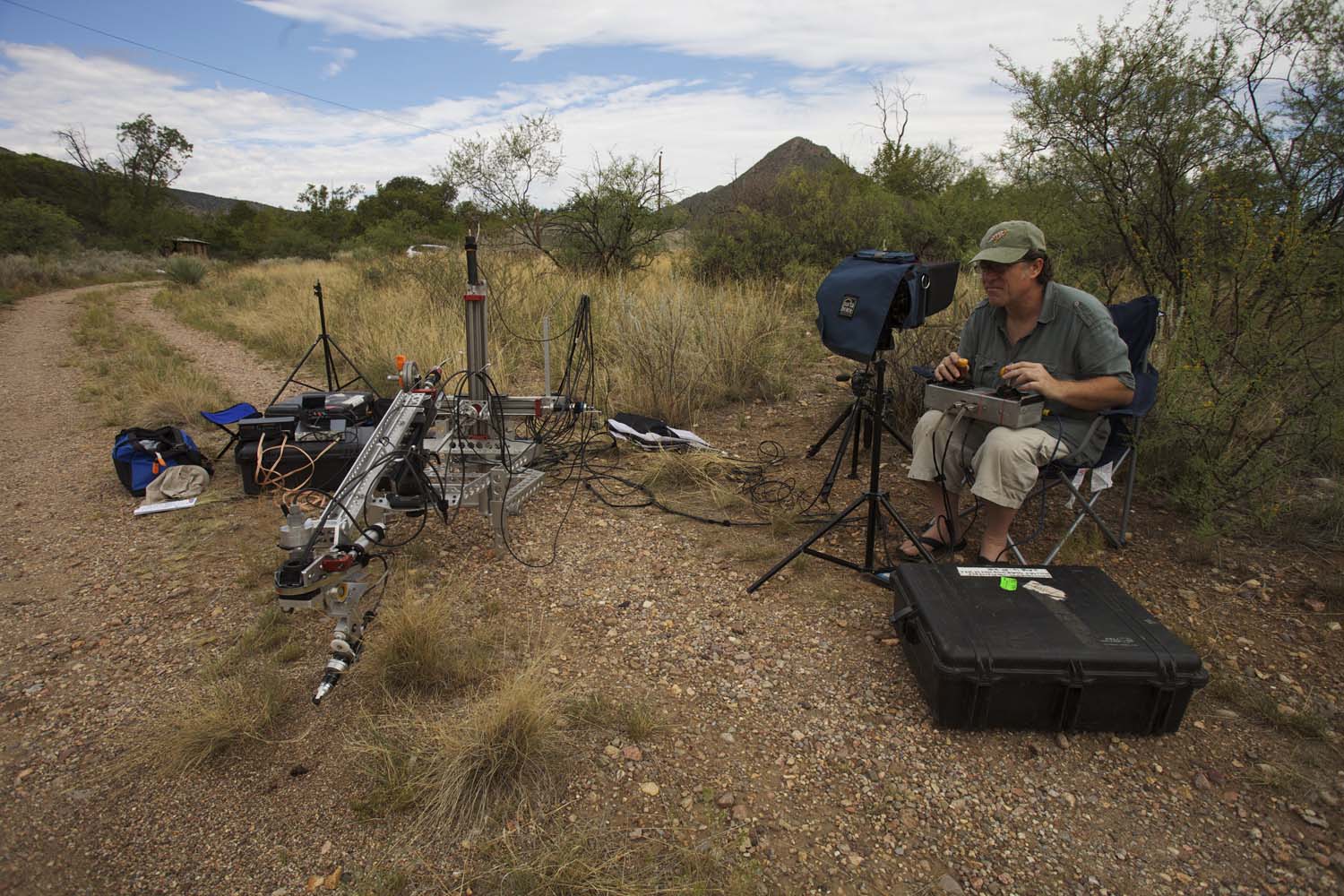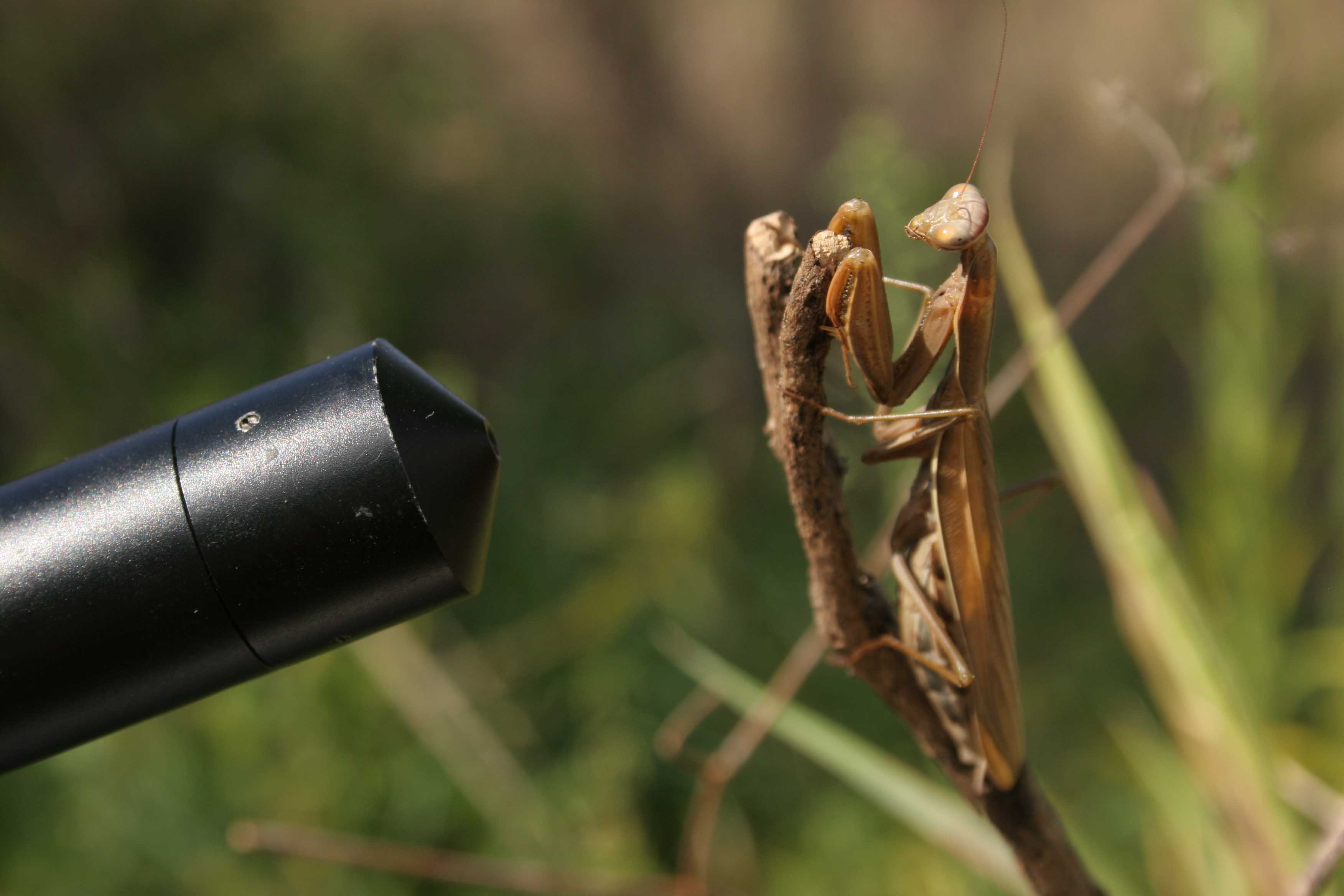
Frankencam, or ‘Frank’ as he is affectionately known, was created to enable us to film small creatures up close with the ability to move the camera effortlessly around without disturbing their natural behaviour. This meant that we could film life in ways never before seen, following insects a hair’s breadth from the ground or manoeuvring the camera in and around the undergrowth with highly precise and vibration-free movement, all the while preserving the very environment we were trying to film.
The name came about because he was an assemblage of cameras held together in a crude fashion with nuts and bolts, kind of like Frankenstein’s monster. His high-definition camera can film from the ground up and makes ants look like the creatures from Them! and woodlice into giant trundling trains—something children loved in our award-winning series Smalltalk Diaries.

The long cabling—currently tied up very neatly in the Nature, Camera, Action! exhibition—lets us take the control box and video recording unit away from the camera and rig so that we don’t effect the behaviour of the animals and biting insects become (slightly) less of a problem.
When we brought 20 cases of equipment with us to film ants in Arizona, a state that has average summer temperatures of 40+ degrees Celsius, some of the crew questioned having to carry the hundreds of kilos of kit that were needed to operate Frankencam.
Upon arrival those not sure about the value of Frankencam were certainly convinced of the need for a camera that allowed us to be well away from our ant subjects. The ants of the day were harvester ants (Pogonomyrmex barbartus) who have a vicious sting containing the most toxic insect venom in the world. We had arrived in the middle of their nuptial flights, whereby the males and winged queens come out of the nest, fly off and mate. Unfortunately, for us, this marked a very defensive period for the worker ants and they will attack anything that moves.

The moment we got close to them the bites started. They were extremely painful—worse than the infamous bullet ants we filmed in Costa Rica—and by the time Frankencam was ready, some of us had more than 50 stings! Once we placed Frank by the colony, we were able to move away and watch our window into the highly complex society in which they live. Now, at a distance, the ants resumed their natural behaviour and we could observe them without interference.
Frank is more than just the sum of his parts. Not only a solution to the technical problems of filming a microcosm, he allows us to explore a world that has never been seen before. Although Frankencam was designed to get us away from nasty stinging insects, in fact he gave us an intimacy with their realm that enabled us to discover that the ants weren’t nearly as nasty as people had imagined.
Hi
My name is Richard schofield and am from the country India, I work for a private sector, and am very passionate about being in nature and studying them in every bit, and then through my lens started capturing the moments in wilderness.
I have got an assignment on filming ant and and create a story for inspirational talks, but then I was just googling around for the right gear for making videos on ant, then I came across this article, therefore thought to get some expert comments from you or from the expertise. Understand filming ant is way to big task, but I have thought about it and want to give a try, therefore if u can guide with the gears to be used, also I do not want to put a lot of money in it, some basic gears will be good enough..
Hope to hear from you and pray you be my helping master. Thanks !!!
Regards
Richard
In the Empire of Ants documentary, they explained that normal phone camera lenses were used and can be purchased for 8 pounds. What is the specific name and model of the lens used?
Please please make a tutorial. I too am from India and am interested in filming ants. I too have cost constraints.